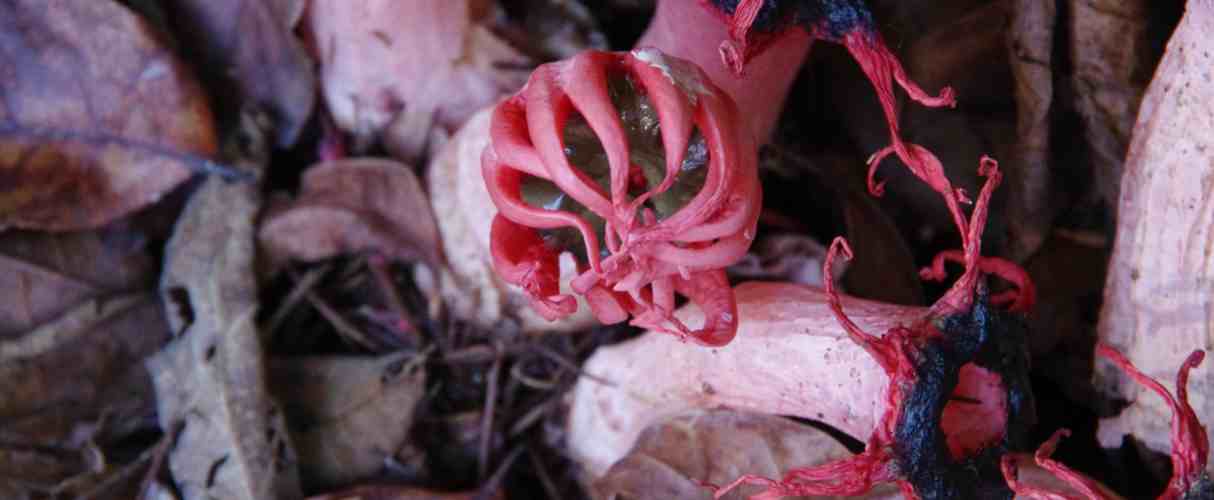The anemone stinkhorn is sometimes called sea anemone fungus and starfish fungus because its fruiting body bears resemblance to these sea creatures.
Stinkhorns are part of the Phallaceae family. Looking through a microscope one can see that this type of fungus has a club-shaped spore producing structure. This is called the basidium and the stinkhorn is a type of basidiomycete fungus.
Anemone stinkhorns grow on the forest floor where the leaf litter is thick and woody debris is decomposing. It is a widespread species and was the first fungus to be described in Australia.
The 10cm long hollow stalk bursts out of the ground from an egg shaped base. It is light-pink and at the top has six to ten red arms that radiate from the centre. The top of the fungus is covered in a dark-brown to olive-brown slime (gleba). If one is fruiting near the path at Mary Cairncross, you'll might smell it before you see it. The slime produces an odour like faeces or rotting meat which attracts flies. The slime contains the spores of the fungus and is a secret distribution weapon. The smell attracts flies which then spread the spores.
This local fungus has been transported to other countries in soil products by mistake - to North America, South Africa and the Pacific.
